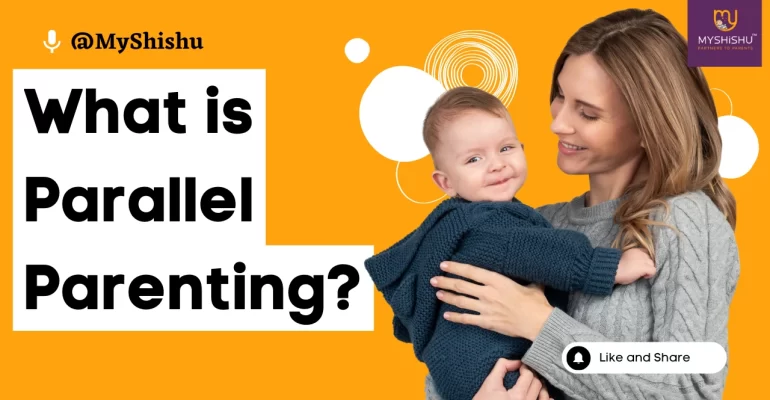What is Parallel Parenting? A Comprehensive Guide
What is Parallel Parenting? A Comprehensive Guide
Parenting can be a beautiful journey, but it’s not without its challenges. When a relationship ends and co-parenting seems impossible due to unresolved conflicts, parallel parenting can provide a practical and peaceful solution. In this blog post, brought to you by MyShishu, we’ll explore what parallel parenting is, how it differs from traditional co-parenting, its benefits for children, and offer tips for creating a successful parallel parenting plan.
Table of Contents
- What is Parallel Parenting?
- Differences Between Parallel Parenting and Co-Parenting
- Benefits for Children
- Creating a Successful Parallel Parenting Plan
- Riddles for Some Family Fun!
- Conclusion
What is Parallel Parenting?
Parallel parenting is a unique approach designed for parents who find it extremely difficult to communicate or cooperate after a separation or divorce. It acknowledges that some relationships are too strained to enable traditional co-parenting, where parents work closely together to raise their children. In parallel parenting, the focus is on minimizing direct interaction between parents while ensuring the children maintain healthy relationships with both.
Differences Between Parallel Parenting and Co-Parenting

1. Communication: In co-parenting, parents regularly communicate and collaborate on various aspects of their children’s lives. In contrast, parallel parenting minimizes direct communication, reducing the chances of conflicts and disagreements.
2. Decision-Making: Co-parenting often involves joint decision-making regarding education, health, and extracurricular activities. Parallel parenting may allocate specific responsibilities to each parent to avoid conflict over such decisions.
3. Events and Activities: Co-parents often attend school meetings, extracurricular activities, and events together. Parallel parenting means parents typically attend these functions separately.
Benefits for Children
While parallel parenting may seem unconventional, it can offer several advantages for children:
1. Reduced Conflict: Children are shielded from ongoing conflicts between parents, which can alleviate emotional stress and anxiety.
2. Stability: Parallel parenting provides a structured routine, ensuring children know what to expect and where they’ll be at specific times.
3. Maintaining Relationships: Children can maintain relationships with both parents, even in high-conflict situations.
4. Emotional Well-being: A peaceful environment in both households can positively impact children’s emotional and psychological well-being.
Did you know?
But No Kneecaps
Babies do not have kneecaps when they’re born! Had you ever noticed? These finish appearing only once the baby reaches at least 6 months of age.
Creating a Successful Parallel Parenting Plan
To establish an effective plan, attention to detail is crucial:
1. Clear Parenting Time: Specify each parent’s parenting time, including weekdays, weekends, holidays, and vacations.
2. Pick-up and Drop-off: Define precise pick-up and drop-off times and locations, choosing neutral, public places to limit contact between parents.
3. Handling Cancellations: Address how to handle canceled visitations and any arrangements for make-up times.
4. Decision-Making: Clearly outline which parent has decision-making authority on various aspects of the child’s life, such as education, healthcare, and extracurricular activities.
5. Communication: Minimize direct communication between parents; suggest using email or text for logistical matters.
6. Use a Communication Book: Many parallel parents find communication books helpful. These travel between households and provide updates on the child’s activities, routines, and any necessary information.
7. Conflict Resolution: In the event of disputes, consider involving a mediator or parenting coordinator to resolve issues without direct confrontation.
Riddles for Some Family Fun!
To add a touch of enjoyment to your parallel parenting journey, here are a couple of riddles you can share with your children:
Riddle 1:
I’m full of colors, a playground in the sky,
With swings and slides, oh so high.
What am I?
Answer: A Rainbow!
Riddle 2:
I’m a furry friend who likes to nap,
Chase mice and take a long catnap.
What am I?
Answer: A Cat!
Conclusion
Parallel parenting might not be the typical approach to co-parenting, but it can be a lifeline for parents struggling to maintain a healthy relationship after separation. By creating a detailed plan that focuses on the children’s well-being and employing effective communication strategies, parallel parenting can provide a path to peaceful co-parenting and happier, healthier children.
Remember, every family situation is unique, and the right approach for one might not be suitable for another. The key is to prioritize your children’s needs and well-being, fostering an environment where they can thrive despite the challenges of a separation or divorce.
Celebrate each step of your child’s journey and remember that parenting is an ever-evolving adventure. Stay tuned for more insightful blogs from MyShishu!
Explore our range of courses on new-age parenting at New-Age Parenting | Modern Parenting Styles | MYSHISHU.
For additional parenting insights and valuable information, check out our blog “Cry, Feeding and Weaning of Newborn Baby” at Cry, Feeding and Weaning of Newborn Baby – My Shishu.
Hope you’ve enjoyed the blog “What is Parallel Parenting?”. Happy Parenting!











